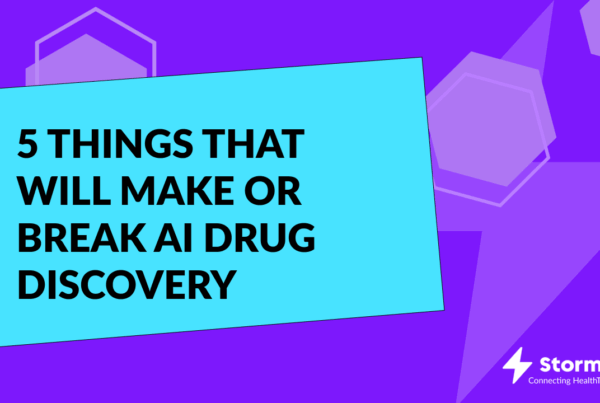In the midst of an economic slowdown, the funding scene for HealthTech has changed dramatically. Just three years ago, investors and analysts were saying that the upside to Covid-19 was that the HealthTech grew “10 years ahead in 10 months”. Funding for HealthTechs surged as a result, hitting $16 billion in 2020 and then $62.5 billion in 2021. However, 2022 came and things changed even more. The continued impact of the pandemic, the war in Ukraine, the global supply chain disruptions and inflation, led to uncertainty. This ultimately resulted in a drop in investments in the HealthTech industry.
All of these changes led to founders and investors trying to predict the future, but it is natural to wonder: do we know where we are headed? How long will it take to get there? Do we focus our funds on profitability or growth?
However, in order to predict the future, we need to take a look at the past.
Those who do not learn from history are doomed to repeat it
When trying to understand the behavior of the HealthTech market during economic slowdown, we first need to analyze the Healthcare market to better understand the past.
Historically, the healthcare industry is often seen as a counter-cyclical investment: it tends to perform well even when there is economic slowdown. This is because people always need medical care regardless of their economic situation. The healthcare market is seen as one of the most reliable and steady performers. So, we’ve decided to take a look at more concrete cases to see how the industry behaves during an economic slowdown.
Let’s take a look at the most recent economic slowdown: the renowned Covid-19 pandemic. During the pandemic, there was a surge in investment into HealthTech companies. Governments, venture capitals and angel investors have collectively invested billions of dollars into HealthTech startups. For example, a recent report from the venture capital firm Atomico showed that the amount of money invested in HealthTech companies in the second quarter of 2020 had almost tripled from the same quarter the year prior.
In addition to direct investments into HealthTech startups, governments and venture capital firms have also created funding programs to support the development of HealthTech solutions. For instance, the UK’s Department of Health and Social Care announced a £30 million fund in April 2020 to support the development of digital solutions that address the challenges posed by the pandemic.
Nevertheless, it can be argued that the pandemic was “the perfect storm”, as the economic slowdown was caused by a virus. In order to mitigate the effects of the virus, more focus and importance was set on health. So let’s take another instance to get an unbiased view of the healthcare market during an economic slowdown.
During the recession of 2008, while many industries and businesses suffered, the healthcare industry saw only a slight decline in growth. Despite the economic downturn, the healthcare industry saw job growth continue; in fact, itwas higher than the national average. Additionally, the government stepped in with various forms of financial aid to help the struggling healthcare industry. This included tax cuts for medical professionals, increased access to government-funded health insurance programs, and increased Medicaid reimbursements. These measures helped to soften the blow to healthcare providers, allowing them to weather the recession and continue to provide necessary medical services to those in need.
We must mind today
Significant changes over the last nine months suggest that the market is rebalancing, with investments and valuations dropping from the peak of 2021; but there is still a significant increase in comparison to 2020. Furthermore, The IPO window for the HealthTech sector was closed by a turbulent public market caused by inflation, worldwide geopolitical events, and interest rate increases. As the saying goes, when one door closes, another one opens; M&A is on the rise. Compared to the first three quarters of 2021, private VC-backed M&A is up 16%. Moreover, demand for mental healthcare increased this year as a result of an increase in mental health disorders and a growing shortage of providers. This created an increase in mental health valuations and deal sizes. Regardless of this drop, the HealthTech market remains the second largest industry, counting for 12.7% of startup activity.
While the drop in funding in the HealthTech sector seems concerning, Rock Health sees it as a remedial from an overheated market.
“In a downtrodden market climate, things don’t need to feel doom and gloom. 2022 was a necessary reminder that investment is cyclical, and that strong players build resilience in weathering funding climate changes”
The past is always tense, the future perfect
Despite predictions of an economic slowdown this year, aMoon, a venture capital fund, believes that the HealthTech sector will continue to see significant VC funding in 2023. Investors and advisers interviewed by Fierce Healthcare have noted that the current capital markets look favorable for the HealthTech industry, even in the midst of a recession. Companies with strong operational and financial fundamentals are likely to come out on top, while those that have risen at inflated valuations stand to lose. Alongside aMoon, Rock Health also sees a bright future for the HealThech industry in 2023:
“We expect that 2023 will be built up on slow, steady, and maybe even boring strategies for healthcare startups and enterprises alike: managing cash, re-structuring to accommodate revenue volatility, and investing in technology infrastructure. But spring is on the horizon. Digital health can’t ‘cut’ its way to impact, and the smart decisions of today will fertilize the next investment upswing.”
In every difficulty there is an opportunity
Opportunities in the HealthTech industry are expected to continue to grow in 2023. One key trend is the increasing use of patient applications and digital front doors, which allow anyone with a smartphone or computer to access their healthcare records. Additionally, the use of health accessories and at-home monitoring is expected to increase, allowing consumers to utilize their smart watches and other accessories to modernize healthcare. Opportunities will progress for use cases such as cancer diagnoses based on liquid biopsies, predicting cancer progression and improving gene therapies. AI is being used in treatment and preventive tech to help improve diagnostic accuracy and mental health outcomes. With the rise of Telemedicine and technological advances, 2023 could represent an inflection point for real-world utilization of artificial intelligence, and standards could raise for health data privacy and cybersecurity.
We Are Here For You
Storm3 are dedicated to supporting the rapid growth of the HealthTech industry by assisting pioneering HealthTech startups and scale ups with growing their teams. We are specialist recruiters dedicated to working with the top companies across the HealthTech landscape. Whether you’re a start-up or scale up, Storm3 is here to help you find the right senior talent for the right specialism. If you’re looking to expand your team, contact us . If you’d like to stay up to date on the latest industry news, click here to follow our LinkedIn page!







